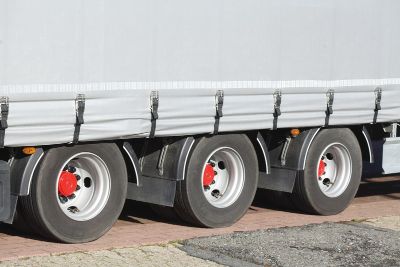
Trucker Drivers Have The Upper Hand In Race To Autonomy
With all the progress we have seen in the race toward autonomous trucks, it would seem that the American truck driver’s livelihood is in jeopardy. It is not, at least not in the foreseeable future. The idea of autonomy promises a lot of things from road safety to better fuel efficiency. But there are certain aspects to trucking that require a human being. The work flatbed truckers do is a perfect example.
Autonomy is a concept based primarily on getting cargo from shipper to receiver without the use of a human driver in the process. In and of itself, this concept seems highly implausible given the fact that it has not worked well in other industries. For example, airplanes are now fully capable of flying autonomously. Yet pilots are still employed. They are still in high demand by all the world’s major airlines.
It all boils down to the reality that there are certain aspects of flying a plane that cannot be left to autonomous computers. What is true for the airline industry is true for trucking. Tomorrow’s autonomous trucks may mean less physical driving for truckers, but it will not eliminate their jobs entirely.
Cargo Control Requires Humans
By far the biggest illustration showing why human truck drivers will not be walking the unemployment line due to autonomy is found in cargo control. Take any flatbed trailer and just consider what goes into making sure cargo is properly loaded and fully secured. There are too many variables in play to leave cargo control to computerized robots.
Robots are capable of following a certain set of static directions programmed into them by builders. They cannot compensate for the many nuances that go into effective cargo control like the human brain can. And because very few flatbed loads are static, they all call for cargo control deployments unique to each load.
Beyond the shipping yard is a requirement for truck drivers to periodically check the security of their cargo en route. Federal law mandates the first check within 50 miles of departure, then additional checks at regular intervals until the destination is reached. Autonomy does not account for this. A truck driver will still be necessary to keep track of cargo from start to finish.
Automatic Tarping Not the Same
Some who believe fully autonomous trucking will be an eventual reality point to automatic tarping machines as an example of what robotics and engineering are capable of. But it is not the same. In fact, it’s not even close.
When a truck driver buys a tarp from a company like Mytee Products, for example, that tarp may be deployed either manually or with an automatic machine. The only difference is that a machine lays the tarp over the load so that the trucker does not have to climb on top. The machine does not secure that tarp. Securing is a job for the truck driver.
The truck driver still walks around and attaches bungee straps to anchor points and grommets. The driver still wraps straps around the load to keep the tarp from flapping in the wind. The driver still inserts edge and corner protectors to prevent tarp damage.
Cargo control is far too involved to leave it to autonomous robots. Computer software is just not capable of doing the same kind of intense calculations as the human brain. So while autonomy may relieve the truck driver of some manual driving tasks, it will never completely relieve him of his job. America’s trucking jobs are not in jeopardy. They have the upper hand in the race to trucking autonomy.

